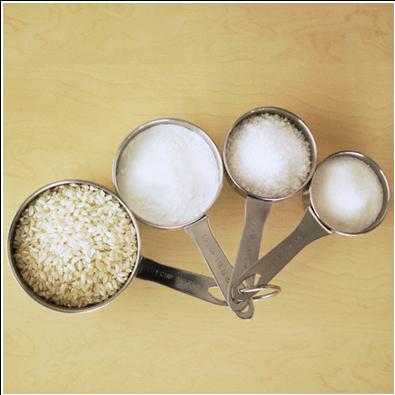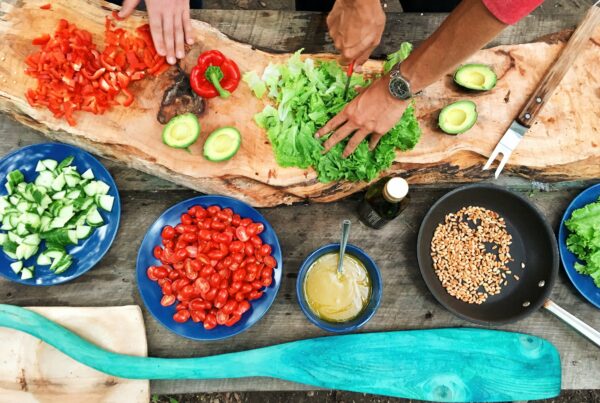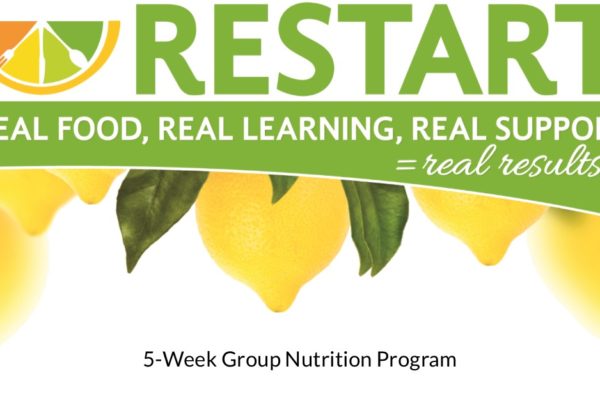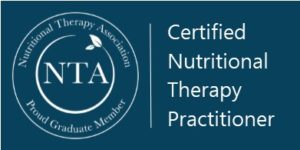This is Part 3 of a 4-Part guest post series on Understanding and Healing from Yeast Over-Growth by Amy Jones.
 Amy Jones is a Childbirth Educator and Birth Doula. She teaches classes on vaccines, herbs, essential oils, and nutrition and has authored two books, A World of Wisdom Cookbook and The Way of the Peaceful Birther. All of this led to her co-founding and directing Holistic Living Events, which puts on the annual LDS Holistic Living Conference.
Amy Jones is a Childbirth Educator and Birth Doula. She teaches classes on vaccines, herbs, essential oils, and nutrition and has authored two books, A World of Wisdom Cookbook and The Way of the Peaceful Birther. All of this led to her co-founding and directing Holistic Living Events, which puts on the annual LDS Holistic Living Conference.
The LDS Holistic Living Conference is held the fourth Saturday in June at Paradigm High Charter School in South Jordan – this year that’s June 23! Register for the conference with a friend, and when you use this code: BOGO205C476B0C, you’ll get 20% off your second registration! I hope you enjoy the following, Taming the Yeastie Beasties – Causes and Treatments, by Amy Jones.
What Causes Yeast to Overgrow?
When you look at the list of things that can cause yeast to overgrow, it easily explains why it has become an epidemic in the past century, and certainly within the past few decades. You also begin to understand why yeast overgrowth has always been a concern. It is nearly impossible for modern people to escape exposure to these triggers, which is why it is incumbent to everyone to always be vigilant about their diet and lifestyle and how it may affect their internal zoo and treat accordingly. Take a deep breath, here is a list of the most common and likely yeast overgrowth triggers:
- Antibiotics

- Refined flours/high starch/carbohydrate foods
- Alcohol, recreational drugs, many prescribed drugs
- Use of corticosteroid and non-steroidal anti-inflammatory drugs (NSAIDs)
- Stress (depresses or even shuts down the Immune System)
- Infant formula use
- Vaccines
- Cesarean Sections (yeast overgrows for both the mother and the baby)
- Any type of surgery or traumatic injury
- Exposure to heave metals (via tooth fillings, vaccines, food,and tap water)
- Exposure to artificial coloring, flavorings, and sweeteners
- Insufficient vitamin D (in particular, not enough direct sunlight exposure)
- Consuming animal products contaminated with antibiotics or growth hormones, i.e. any meat or dairy that is NOT organic
- Insufficient sleep
- Excessive traveling, especially to other countries
- Pesticide / herbicide consumption
Even if you’ve had antibiotics only once, as a baby even or had only one vaccine in your whole life, or have since gotten your fillings replaced with composites, I guarantee you have a yeast overgrowth going on.
How to balance yeast
 I often describe balancing yeast like getting rid of a stalker ex-boyfriend. you can’t just politely ask it to keep its distance by eliminating your refined sugar and flour intake. You have to submit a restraining order and get your concealed weapons permit and learn to shoot by not only adjusting your diet, but changing your lifestyle and taking herbs, essential oils, etc.
I often describe balancing yeast like getting rid of a stalker ex-boyfriend. you can’t just politely ask it to keep its distance by eliminating your refined sugar and flour intake. You have to submit a restraining order and get your concealed weapons permit and learn to shoot by not only adjusting your diet, but changing your lifestyle and taking herbs, essential oils, etc.
When I went looking for ways on how to balance yeast (initially I thought this was just for my babies and young children), all of them seemed – well – unattainable. The diet suggestions alone would mean that my kids would likely starve themselves. It seemed so daunting and overwhelming that I almost had resigned myself that it would be easier to live with a yeast overgrowth than treat it via the suggestions I was finding.
So, I had to find something kid friendly. That didn’t happen. I basically had to create it myself. So then, I have talked with other people who have approached yeast balancing in a much more practical manner. Here are some of those more simple ways to get yeast in check:
Step 1: Probiotics
 A note about good bacteria: As newborns, our large intestines are colonized by beneficial bacterial, like Lactobacillus acidophilus and Bifidobacterial bifidum. These bacteria, acquired from our mothers as we pass through the birth canal (one reason why c section babies are more sickly), perform a number of functions in our bodies. They manufacture B vitamins, aid in the digestion and absorption of food, and provide a barrier on the mucosal lining of these various tissues, preventing abnormal bacteria and yeast from entering the system. Besides coexisting peacefully in the colon, beneficial bacteria also reside in the mucous membranes of the throat and in the vagina. These “good bacteria” live within us in a symbiotic, friendly relationship.
A note about good bacteria: As newborns, our large intestines are colonized by beneficial bacterial, like Lactobacillus acidophilus and Bifidobacterial bifidum. These bacteria, acquired from our mothers as we pass through the birth canal (one reason why c section babies are more sickly), perform a number of functions in our bodies. They manufacture B vitamins, aid in the digestion and absorption of food, and provide a barrier on the mucosal lining of these various tissues, preventing abnormal bacteria and yeast from entering the system. Besides coexisting peacefully in the colon, beneficial bacteria also reside in the mucous membranes of the throat and in the vagina. These “good bacteria” live within us in a symbiotic, friendly relationship.
Remember the Rule of 15
Take a live, strong probiotic daily, consisting of at least 15 billion active cultures. The more the merrier. Also, look for a probiotic containing at least 15 different strains of beneficial bacteria. Typically, the best ones will be in the refrigerated section of your health food store and the most expensive – sorry. No, a good daily yogurt is not enough to colonize your gut with what is needs. Probiotics contain our good bacteria, that coat our internal organs and keep yeast in check, preventing it from invading our systems through our organ walls. For infants, you want to get a probiotic that specifies that it’s for babies and toddlers, as the molecules are smaller and are more available in their little systems. If you are unable to find infant or toddler specific probiotics, go ahead and use the adult ones.
- Prebiotics. Prebiotics are non-digestible parts of foods that probiotics can use to fuel their growth and activity. the prebiotics work by stimulating the growth of probiotics. However, in order to get to where they are needed, prebiotics must be able to get through the upper part of the intestine without being digested or absorbed by the body. The top prebiotics are:
- Chicory Root

- Jerusalem Artichoke
- Dandelion Greens
- Garlic
- Leek
- Onion
- Cooked Onion
- Asparagus
- Wheat bran
- Whole Grains, including oatmeal
- Banana
- Flax and chia seeds
- Almonds. Well known for their prebiotic properties that improve our digestive health by increasing levels of beneficial gut bacteria, in addition to being an excellent source of alkaline protein. Soaking them in water in the refrigerator for at least 4 hours will remove their phytic acid (an enzyme inhibitor that protects the nuts while growing), making the nutrients more bio available. You may wish to sprinkle unrefined salt or Redmond salt on them.
Step 2: Greens
Taking a greens supplement is incredibly helpful when you are balancing yeast. mold, Fungi, and yeast attach on to the greens molecules which helps to sweep them out efficiently.
Step 3: Treatment
You can approach balancing yeast with herbs, essential oils, or homeopathics. The latter I will not address because I haven’t personally tried it, although I’ve known many people who have used homeopathics successfully to balance yeast.
 Herbs: equal parts chaparral, pau d’arco, olive leaf, and myrrh.
Herbs: equal parts chaparral, pau d’arco, olive leaf, and myrrh.
These can be encapsulated or tinctured, or purchased commercially at Feel Good Foods.
If you are in stage 1, you could try the following regimen for persons 7 ears and older: 3 pills (or 3 dropperfuls – dropperful equals 25 drops), 3 times per day for 14 days – which would equal 120 pills or 4 oz of tincture. For stage 2, you could use 3 pills two times a day for 21 days; for stage 3, 3 pills once a day for 28 days; and for stage 4, 1 pill once a day for 60 days.
Tips and tricks for treating with herbs:
- Once this initial treatment is complete, take 3 pills (or 3 dropperfuls) once a day for one month for every year you’ve had a problem, otherwise the yeast is likely to overgrow again quickly. For many people, this would include exposure to yeast overgrowth in the womb. For instance, if you are 30 years old, and you feel you’ve had yeast overgrowth symptoms all your life, you would take 3 pills a day for 30 months. Add on one more month if you think your mother had yeast overgrowth when she was pregnant with you.
- Be sure to take a probiotic, greens, and prebiotics with this regimen.
- For infants and between 4-12 months, doing 1 dropperful per day with probiotic is sufficient.
- For children 1-3 years, 2 dropperfuls with a probiotic per day.
- For children 4-6 years, 2-3 dropperfuls with a probiotic
- My Feel Good Foods Regimen. some people report great success on this regimen.
 Essential oils: (recommendations courtesy of Julia Holt) 5 drops Lemon Essential Oil, 5 drops Melaleuca (Tea Tree) Essential Oil, 3 drops Oregano Essential Oil, in a capsule – take 1 per day with a meal.
Essential oils: (recommendations courtesy of Julia Holt) 5 drops Lemon Essential Oil, 5 drops Melaleuca (Tea Tree) Essential Oil, 3 drops Oregano Essential Oil, in a capsule – take 1 per day with a meal.
Tips and tricks for treating with essential oils:
Rotate using the essential oils with probiotics. for example, stay on the yeast killing blend for 10 days. Then rebuild with a probiotic for 5 days, taking a good probiotic 3x day. Repeat cycle until yeast is controlled.
This cycle can last a few months.
Diet and Other Supplements
 Personally, I am not of the school of thought that eliminating fruits and vegetables from the diet is healthy or beneficial when balancing yeast. While it is true that yeast can feed off of these foods, I find that treating with the herbs or oils eliminates the ‘need’ to cut out any healthy foods. Additionally, many people are so intimidated by the diet restrictions, that they feel living with the yeast is better than the treatment. I have found that those with a while food diet, ones that even include clean dairy and meat, can see huge success implementing the herbs and oils, but the following are some general diet guidelines that will improve your outcomes:
Personally, I am not of the school of thought that eliminating fruits and vegetables from the diet is healthy or beneficial when balancing yeast. While it is true that yeast can feed off of these foods, I find that treating with the herbs or oils eliminates the ‘need’ to cut out any healthy foods. Additionally, many people are so intimidated by the diet restrictions, that they feel living with the yeast is better than the treatment. I have found that those with a while food diet, ones that even include clean dairy and meat, can see huge success implementing the herbs and oils, but the following are some general diet guidelines that will improve your outcomes:
- Coconut water and Cold pressed Coconut Oil. It contains caprylic acid, a powerful anti-fungal agent that directly kills the Candida yeast. At minimum, drink the water from one or more coconut daily and/or take 3 tbsp. of oil per day.
- Garlic. Two fresh cloves is high in a biologically active compound called allicin. This is a strong anti-fungal.
- Diet. Reducing and/or eliminating refined sugars, refined flours, and refined grains (i.e. white rice) is the most important step.
- Vitamin D. yeast overgrowth produces an immune suppression, or maybe it overgrows because of a lack of it, but either way, when a yeast overgrowth is present, you must increase your vitamin D levels. Sources of vitamin D include those found here.
Before treating with any herbs or essential oils, please refer to Part 4 in this series to avoid negative side effects.
Click here to read Part 1 – Taming the Yeastie Beasties – Introduction.
Click here to read Part 2 – Taming the Yeastie Beasties – Stages & Symptoms.
Click here to read Part 4 – Yeast Die Off: The Herxheimer Reaction.











I’m curious about where brewers yeast fits into this dilemma. We take it because of it’s touted health benefits…but if it’s a straight yeast, is it actually good for you?
Hi Joy,
You’re going to get a lot of varying opinions on brewers yeast. I’ve taken it in the past during pregnancies and could feel the positive effects of it. But a lot of ‘yeast experts’ are going to tell you to steer clear of it. They are also gong to tell you to steer clear of breads made with yeast, too. While I think that there are a lot of problems with commercially made bread, commercial yeast and a lot of strains of commonly used wheat, I tend not to stress about eating small amounts of some *good* brands of commercially made yeast breads because my diet is good and I know how to balance my internal yeast, etc.
Now, with a brewers yeast supplement (deactivated brewer’s yeast), which is often found labeled as “nutritional yeast” it is important to make sure that you get an inactive form of yeast for a nutritional supplement. Because it’s deactivated, it won’t flourish in your intestines like active yeast. So, it really comes down to a personal decision. Personally, I don’t use it anymore because I have found other supplements that give me the same nutrients that brewer’s yeast did, but that doesn’t mean if it were the only choice I had that I wouldn’t take it.
Are these herbs, oils and supplements safe to take while pregnant. I am 7 months pregnant and have had a “yeast” infection off and on during this pregnancy. I had the same issue with the last pregnancy but garlic seemed to keep it at bay. I take a probiotic, garlic, prenatal vitamin, vitamin B , vitamin D, and fish oil daily! It does not seem to manifest after pregnancy only during. I understand hormones can play a factor in this but would like to get rid of this for good!